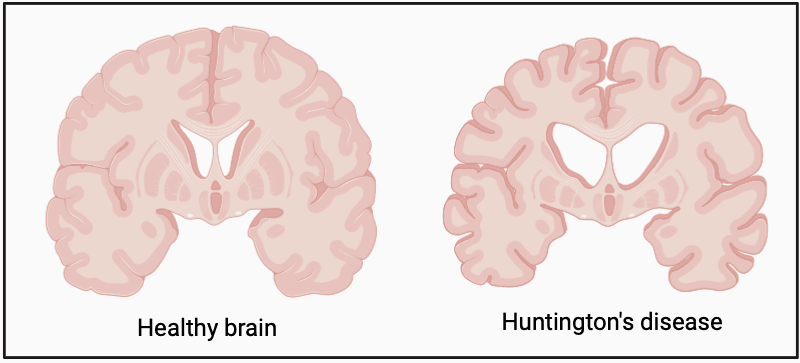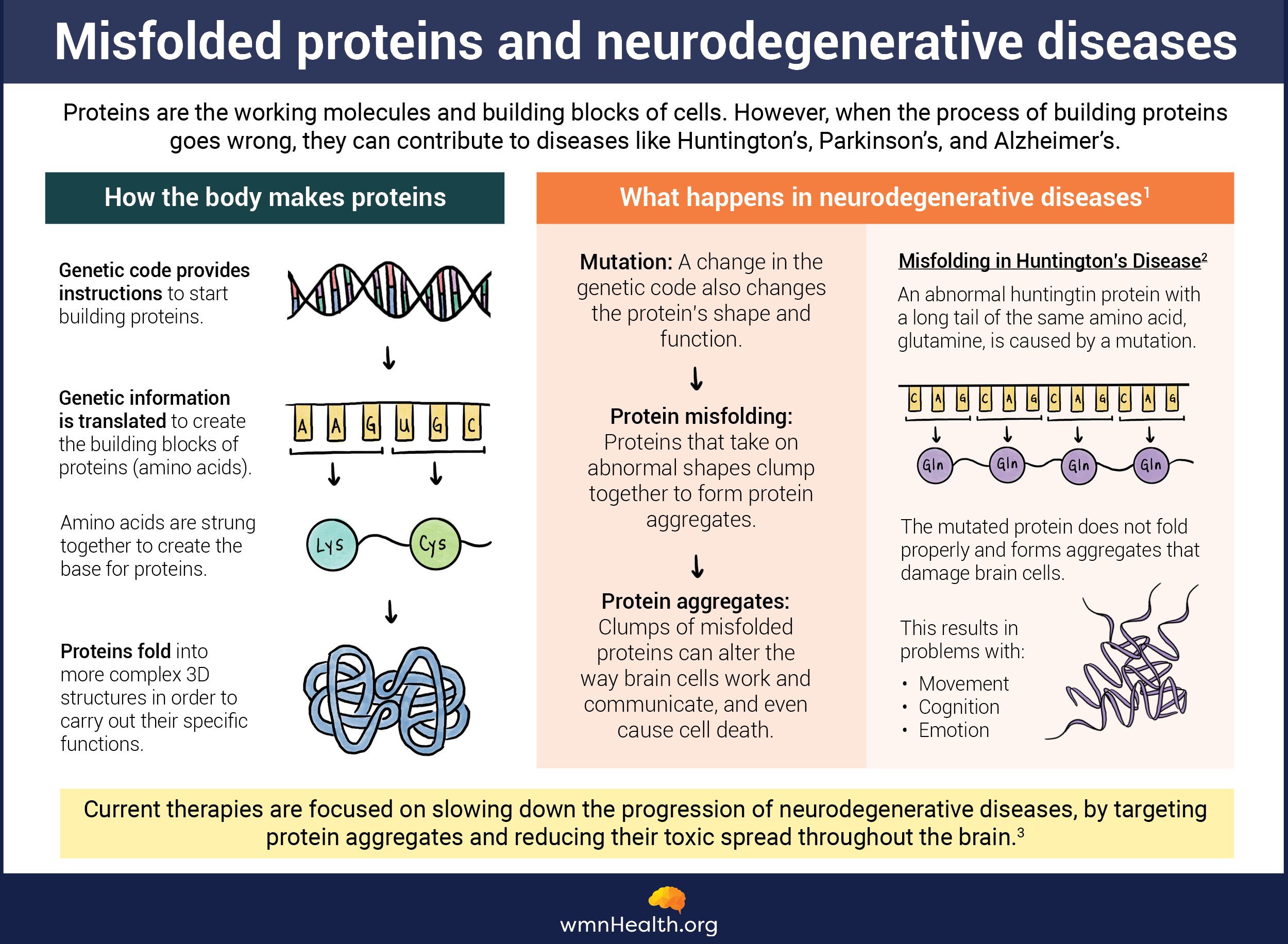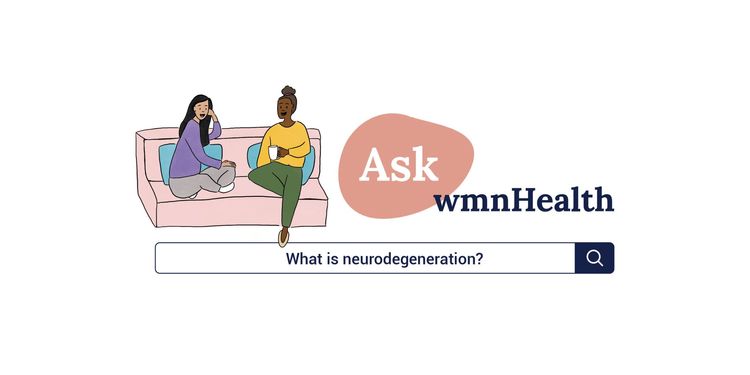
Nov 22, 2023, 5:00 am UTC
4 min
Created by
The neglected science of Huntington’s disease in females
This article covers:
Huntington’s disease (HD) is like a life-or-death coin toss — every child of an affected parent has a 50% chance of inheriting the genetic mutation that leads to the neurodegenerative disease and progressive breakdown of nerve cells in the brain.
In the U.S., approximately 30,000 people live with the condition, with many more at risk of developing it. And while both males and females experience worsening symptoms with time, women report more severe motor, cognitive, and mood symptoms overall.
This stark disparity in how the two sexes experience Huntington’s hasn’t received much attention in the history of the disease, according to Natalia Pessoa Rocha, assistant professor of neurology at McGovern Medical School at University of Texas Health Science Center in Houston.
“In Huntington's studies, researchers often control for sex when what we need to be doing is assessing how it plays a role in the way the condition develops and progresses,” she says.
These sex differences — neglected, ironically, as scientists sought a more complete understanding of the disease — may help brain experts get answers about Huntington’s they've been seeking all along.
What is Huntington’s Disease?
“Someone once described Huntington's disease as an illness of mourning, which seems very apt,” writes British author Charlotte Raven in her self-portrait Patient 1: Forgetting and Finding Myself. “You lose your identity, and some of your humanity, while remaining aware enough to keep a tally of every loss.”
This brain-ravaging condition starts off with the accumulation of toxic huntingtin protein in the brain. A genetic mutation in the Huntingtin gene causes this protein to develop an abnormally long string of a single amino acid called glutamine. As a result, Huntingtin proteins begin to stick together, and form tangled strands that slowly build up within cells and spread from neuron to neuron, killing them in huge numbers. One area of the brain that is acutely impacted by this loss of neurons is the striatal part of the basal ganglia.
 Infographic by Cat Lau. (References below.)
Infographic by Cat Lau. (References below.)The basal ganglia is composed of several brain structures that help control muscle movements, are involved in forming habits, and influence executive function, such as learning, decision-making, and self-control.
The striatal part of the basal ganglia receives numerous inputs from other areas of the brain — including the cerebral cortex, substantia nigra, and thalamus — and sends outputs to other regions of the basal ganglia.
 The volume of the basal ganglia is reduced in people with Huntington's disease. Source: BioRender
The volume of the basal ganglia is reduced in people with Huntington's disease. Source: BioRenderIn Huntington’s disease, these brain circuits appear to be particularly vulnerable to degeneration. In fact, the striatum is so severely damaged that it often appears like a deflated balloon.
What are the symptoms of Huntington’s disease?
Motor symptoms
- Slow or unusual eye movements
- Muscle problems — rigidity or muscle contracture (deformity)
- Impaired posture and balance
- Difficulty with speech
Cognitive symptoms
- Executive dysfunction — difficulty organizing, prioritizing or focusing on tasks
- Tendency to get stuck on a thought, behavior or action (perseveration)
- Lack of impulse control — outbursts and acting without thinking
- Lack of awareness of one's own behaviors and abilities
- Slowness in thought processing
- Difficulty in learning new information
Emotional-behavioral
- Feelings of irritability, sadness or apathy
- Social withdrawal
- Insomnia
- Fatigue
- Frequent thoughts of death, dying or suicide
Source: Mayo Clinic
Currently, there’s no cure for HD but the FDA-approved medication, valbenazine, regulates dopamine levels in the brain and can make Huntington's debilitating motor symptoms like chorea more manageable. (About 90 percent of people with Huntington's disease experience chorea.)
 Huntington's is one of several neurodegenerative diseases in which proteins misfold and form clumps that damage brain cells. Preventing misfolded proteins from accumulating in the brain is a major focus of scientists developing treatments for these diseases. (Infographic by Cat Lau. References below.)
Huntington's is one of several neurodegenerative diseases in which proteins misfold and form clumps that damage brain cells. Preventing misfolded proteins from accumulating in the brain is a major focus of scientists developing treatments for these diseases. (Infographic by Cat Lau. References below.)What are the sex differences in Huntington’s disease?
When Pessoa Rocha first started studying HD, a puzzling aspect of the disease kept coming up: While prevalence rates of HD show both sexes are equally affected by the condition, females consistently have worse motor, cognitive, and mood symptoms.
“Clinically, we knew there was a difference in men versus women with HD, but we had to prove it with strong data,” she says.
In 2021, Pessoa Rocha and her colleagues found a way to do this.
Using datasets from Enroll-HD, a study that follows thousands of people with the condition over many years, the researchers analyzed how, over a period of four visits, motor, cognitive, and mood symptoms emerged and progressed for men and women with HD.
They found that while both males and females reported a worsening of symptoms over time, females presented with more severe symptoms than men to begin with. Females also experienced more depressive symptoms and performed more poorly on cognitive tests compared to males.
(Recently, other researchers analyzing the same dataset found Black patients with Huntington's had worse cognitive and motor symptoms at the time of diagnosis.)
The reasons for these sex differences are still unclear, but Pessoa Rocha thinks gender inequality could be playing a role.
“Women with HD show more internalizing behaviors like depression, while men show irritability, aggression, and substance abuse,” she says. “I think this is related to how, as a result of cultural norms, females learn to internalize stress, while males are allowed to externalize it.”
This pattern of gender inequality crops up again in the doctor’s office, Pessoa Rocha adds, when males and females with HD report the same level of pain, but males with the condition are more likely to receive a prescription for painkillers compared to females with the condition. As a result, the disease progresses differently in both sexes, and females with HD are more likely to be institutionalized.
Moreover, Pessoa Rocha’s research also suggests there may be hidden biological mechanisms that result in females with HD experiencing more severe neurodegeneration than males. This finding, according to Pessoa Rocha, underscores that sex should be an important factor in developing and interpreting biological signs, also known as biomarkers, for the condition.
“At some point, I hope, we’ll have a treatment that could truly make a difference in people’s lives,” she says. “But until we start giving biological sex the importance it deserves in clinical trials for HD, I don’t know if we’re going to get there.”
Infographic references
Huntington's disease:
- What is Huntington's? Huntington's Society. (Accessed November 18, 2023)
- Ferguson MW, Kennedy CJ, Palpagama TH, Waldvogel HJ, Faull RLM, Kwakowsky A. Current and Possible Future Therapeutic Options for Huntington's Disease. J Cent Nerv Syst Dis. 2022 May 21;14:11795735221092517.
Protein misfolding and neurodegenerative diseases:
- Sweeney, P., Park, H., Baumann, M. et al. Protein misfolding in neurodegenerative diseases: implications and strategies. Transl Neurodegener 6, 6 (2017).
- What is Huntington's? Huntington's Disease News (Accessed November 10, 2023)


